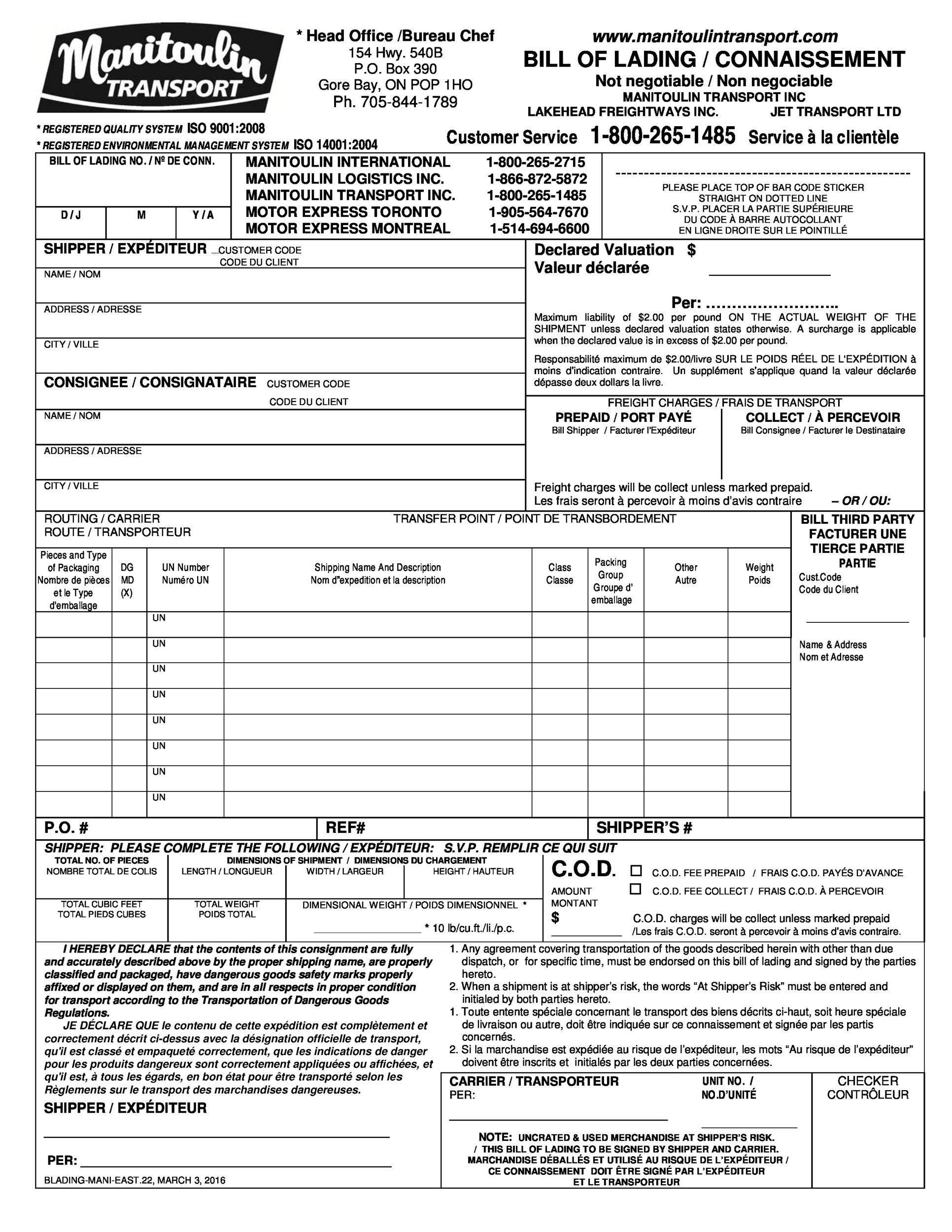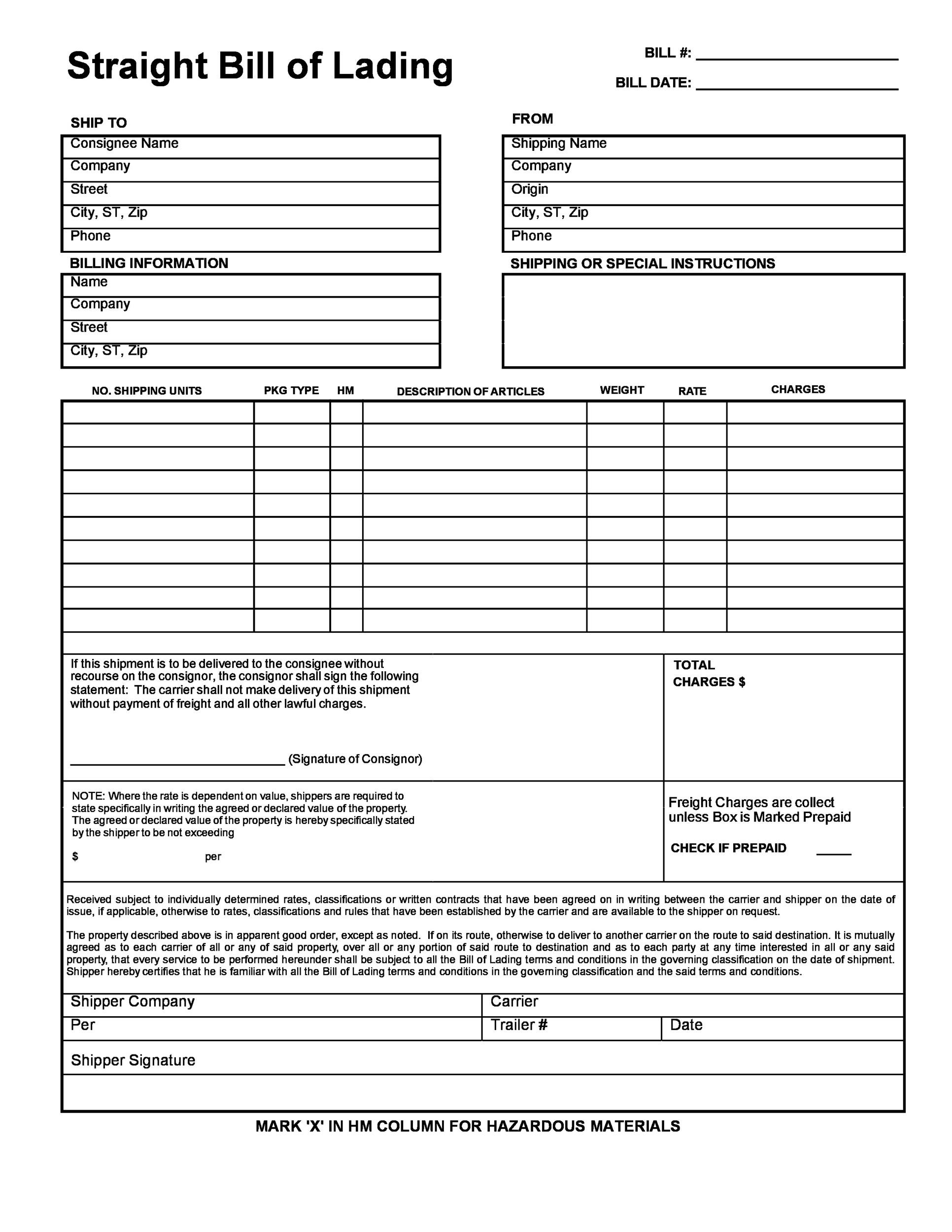Bill of Lading, a legal document, is an essential part of the shipping process. It serves as evidence of the contract of carriage and provides details about the goods being transported. Whether you are a shipper, consignee, or carrier, having a well-documented Bill of Lading is crucial to ensure a smooth and efficient shipping experience. In this article, we will explore the importance of the Bill of Lading and provide you with a comprehensive guide on how to create one.
What is a Bill of Lading?
A Bill of Lading (B/L) is a receipt issued by the carrier to the shipper, acknowledging the receipt of goods for shipment. It also serves as a contract of carriage between the shipper and the carrier. The B/L contains vital information about the goods, such as the quantity, type, weight, and destination. It acts as proof of ownership and is used for various purposes, including customs clearance, insurance claims, and resolving disputes.
 One of the key elements of a Bill of Lading is the description of the goods being transported. It is essential to be accurate and detailed when providing this information to avoid any confusion or disputes during transit. The B/L also includes details about the shipper and consignee, as well as the terms and conditions of the shipment.
One of the key elements of a Bill of Lading is the description of the goods being transported. It is essential to be accurate and detailed when providing this information to avoid any confusion or disputes during transit. The B/L also includes details about the shipper and consignee, as well as the terms and conditions of the shipment.
Why is a Bill of Lading important?
The Bill of Lading serves several important functions for all parties involved in the shipment.
 For the shipper, the B/L serves as proof that the goods have been handed over to the carrier for transportation. It also provides the shipper with a legal document to show ownership of the goods and protects them against any potential liability.
For the shipper, the B/L serves as proof that the goods have been handed over to the carrier for transportation. It also provides the shipper with a legal document to show ownership of the goods and protects them against any potential liability.
For the carrier, the B/L acts as evidence of their receipt of the goods and the terms of the contract of carriage. It allows them to track and manage the shipment, ensuring that it reaches the intended destination safely and on time.
For the consignee, the B/L acts as proof of ownership and provides them with the necessary information to claim the goods upon arrival. It also helps them in verifying the condition of the goods and resolving any potential disputes with the carrier.
How to create a Bill of Lading?
Creating a Bill of Lading is a straightforward process if you have the right template and information at hand. Numerous online platforms offer free templates that you can customize to meet your specific requirements.
 Start by filling in the shipper’s information, including their name, address, and contact details. Next, provide the consignee’s information, ensuring accuracy to avoid any delivery complications. Include the carrier’s details, such as their name, address, and contact information, to clearly state the parties involved in the transportation process.
Start by filling in the shipper’s information, including their name, address, and contact details. Next, provide the consignee’s information, ensuring accuracy to avoid any delivery complications. Include the carrier’s details, such as their name, address, and contact information, to clearly state the parties involved in the transportation process.
Describe the goods being shipped in detail, including the quantity, weight, and type. Accurate descriptions are crucial for proper handling and identification of the goods throughout the shipping process.
Include the terms and conditions of the shipment, such as the mode of transport, delivery terms, and insurance coverage. Clearly state any special instructions or requirements related to the shipment.
Review the completed Bill of Lading to ensure all information is accurate and complete. Once satisfied, sign the document and obtain the necessary signatures from the carrier and other relevant parties.
In conclusion
A well-prepared Bill of Lading is a crucial document in the shipping process. It ensures the smooth flow of goods, protects the rights of all parties involved, and provides a legal framework for the transportation of goods.
 By using a template and following the guidelines mentioned above, you can easily create an accurate and comprehensive Bill of Lading. Remember, attention to detail and accuracy are key to ensuring a successful shipping experience.
By using a template and following the guidelines mentioned above, you can easily create an accurate and comprehensive Bill of Lading. Remember, attention to detail and accuracy are key to ensuring a successful shipping experience.
Always keep a copy of the Bill of Lading for your records and share the necessary copies with the carrier and consignee. This document will prove invaluable in case of any issues or disputes during the transportation of goods.
Create your Bill of Lading today using one of the many free templates available online. Start using this essential document to streamline your shipping process and ensure the safe and timely delivery of your goods.